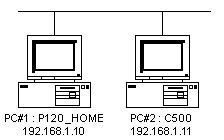 |
You have a small and simple network and are using TCP/IP protocol on both systems: – an IP-address is assigned don both systems – the workgroup name is identical on both systems – File-and-Printer Sharing is installed – something is shared ( all the steps to have systems to show up in the Network Neighborhood ) |
On system #1: P120_HOME: 192.168.1.10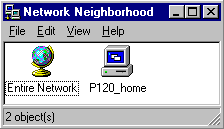 on both systems, only the system itself is shown in the Network Neighborhood |
On System #2 : C500: 192.168.1.11 |
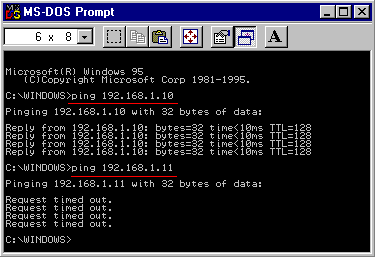 The PING-test to system#2 at 192.168.1.11 fails: no reply |
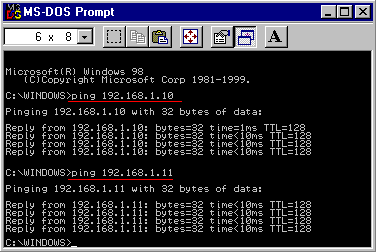 The PING-test shows a working connection to system #1 at 192.168.1.10 |
This is strange: In general, ANY system configured with TCP/IP protocol will reply to a PING test !
UNLESS it has be explicitly deactivated !
Since in this example system#2 is replying to the PING, we need to check why system#1 is not
replying: Check for ANY program installed related to TCP/IP:
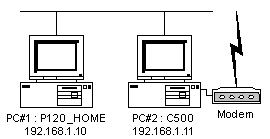 |
In this example, system #2 has a modem connection to the Internet with a Personal Firewall (as protection against unwanted incoming connections) |
If you have a similar program installed, check the setup/configuration.
For ZoneAlarm, it turned out to be a Security setting:
 |
The Security Setting for Internet Access should always be at the highest level, while the setting for the LAN (Local) can be low, if it is a home-network or secure office environment. In this example, I had to check the “Advanced” option. |
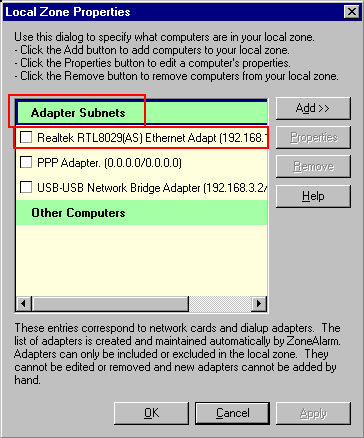 |
And this was the problem: the LAN Network adapter was NOT declared to be in the “Local Zone” (where no security checks are required), so the Personal Firewall also blocked off all NetBIOS network traffic, which was intended to define a common workgroup. Placing a checkmark on the LAN adapter solved the issue: PING worked now in both directions and after a few minutes the systems “found each other” and showed up in the Network Neighborhood: 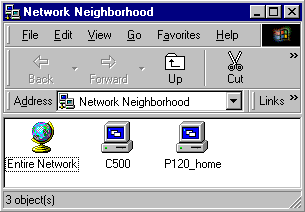 |



